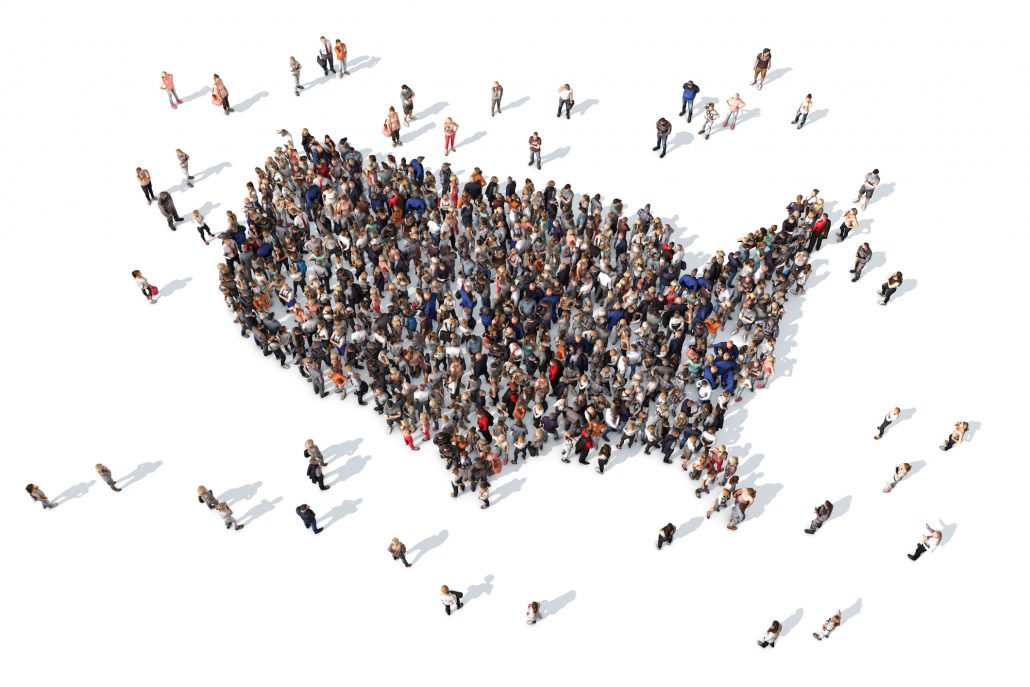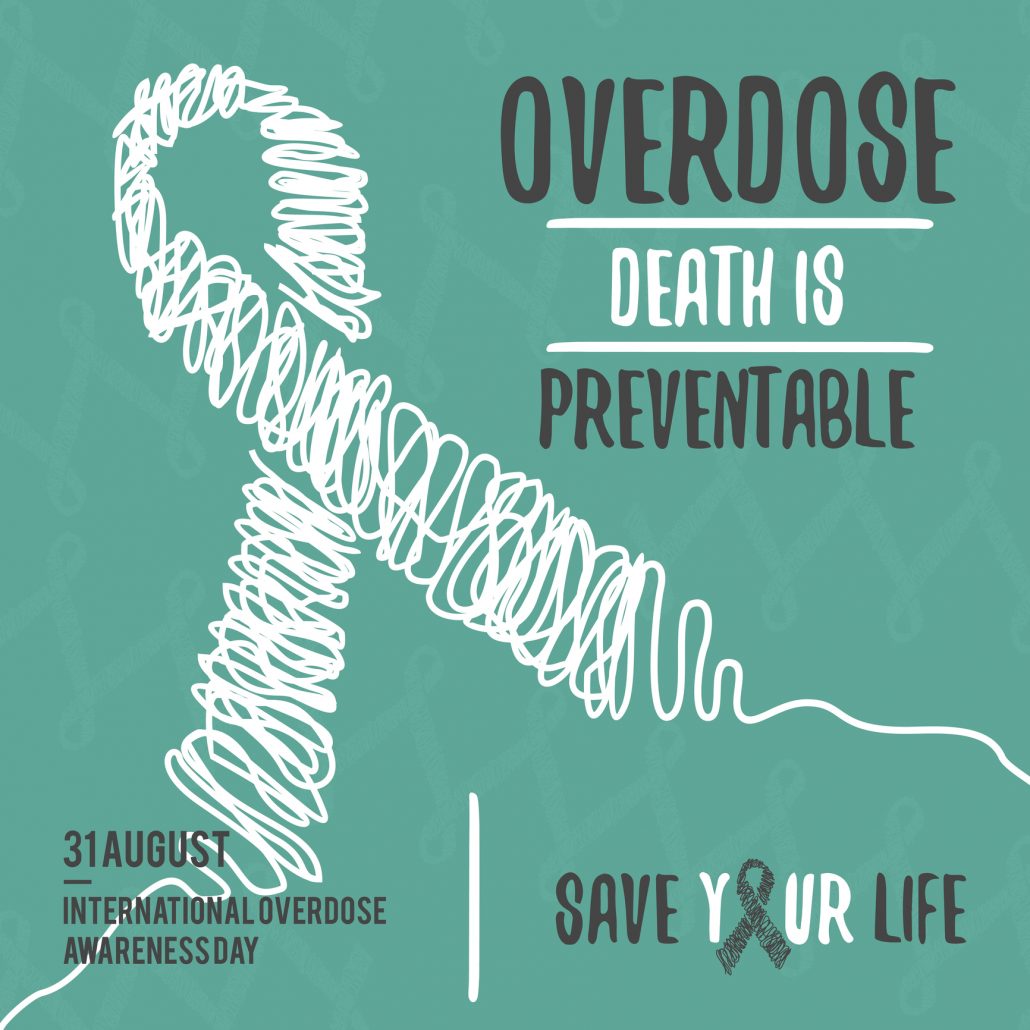by Justin Mckibben | Oct 24, 2017 | Addiction Stigma, Addiction Treatment, Drug Policy, Inpatient Treatment, Mental Health, News, Prescription Drugs

If that headline seems kind of confusing, don’t worry, it should. Technically insurance companies are already required by law to provide the same coverage for substance abuse and mental health that they do for other health conditions… and therein lies the issue.
Back in August the White House Opioid Commission, established by President Trump and led by New Jersey Governor Chris Christie, made several recommendations to the current administration about how to address the current drug crisis as it damages communities across the country. One of those recommendations was to declare a national emergency, while others had to do with options for prevention and education.
In the aftermath of ex-DEA agent Joe Rannazzisi’s eye-opening interview exposing the shady connections between Congress and Big Pharma companies, many have been looking closely at how government officials and multi-billion dollar empires helped create the opioid epidemic. Now the White House’s Opioid Commission is putting a focus on how health insurance companies and the flaws in their policies have contributed to the intensifying addiction crisis.
So with the opioid commission saying they will call-out insurers and make demands on coverage for addiction treatment, will more people have access to help?
Restricted Addiction Treatment
One of the biggest issues the opioid commission seems to have with insurance companies is that frequently their policies only cover one type of addiction treatment and not others. It seems insurance companies are convinced that with a complex and extremely personal issue like substance use disorder or mental health conditions, there is a one-size-fits-all answer. Sadly, most advocates can tell you this isn’t the case.
Something else especially frustrating is that laws already exist to prevent insurers from treating addiction treatment different than any other health issue. Chris Christie himself said,
“Why are we still not seeing addiction services covered, and mental health services covered as broadly as every other type of disease?”
“And what do we need to do to make sure that the law is enforced and followed?”
The Mental Health Parity and Addiction Equity Act of 2008 requires health insurers to treat mental health and substance abuse disorders the same as any other disease. It means they should provide health care coverage for these conditions without additional limits, co-pays or deductibles. If companies add on additional requirements, it creates even more barriers between the suffering individual and treatment. Sadly, not every insurance company thinks it has to play by the rules.
A task force convened by President Barack Obama last year reported that numerous insurance companies still place a number of limits on addiction coverage, like more strict pre-authorization requirements. The insurance companies claim that their policies are only part of a complex problem, insisting that the issue also has to do with shortages of doctors and poor medical training from healthcare providers in the field of addiction treatment.
However, the simple fact that insurance companies are still trying to push back against supporting addiction treatment has the opioid commission ready to address the inconsistencies that are making it even harder for people who need help to get the help they deserve.
Holding Insurance Companies Accountable
The opioid commission is not holding back when it comes to trying to make insurance companies contribute to solutions since they helped contribute to the problem. The New Jersey Governor warned health insurance companies to be prepared for a final report that will “place new demands” on health insurance policies.
Christie and the opioid commission seem to be playing offense, saying Big Pharma drug companies and health insurers profit while allowing an epidemic of addiction to continue, but these new demands will hopefully change all that. Christie added,
“I’m a capitalist. I want everybody to make profits. I think it’s great. But we can’t any longer go about addressing this problem this way,”
“I hope you’re prepared to accept the challenge, because we know if it hasn’t gotten into your own house yet, it could, and then all the sudden your perspective on this problem could become markedly different.”
Not only is there more pressure on insurance companies when it comes to treatment options in their policies, but with how they handle medications in the first place.
Health insurance providers are also under a greater deal of scrutiny for policies that sometimes favor powerful and addictive painkillers over less addictive, and more expensive, variations. So not only are they limiting the options when it comes to getting treatment for substance abuse, but they are limiting coverage of medications to more addictive drugs to save money.
Insurance providers did show up to testify at the commission to help create a more comprehensive view of the issue. Involved were executives from some of the nation’s largest insurance companies:
- Aetna
- Anthem
- Blue Cross Blue Shield
- Cigna
- Harvard Pilgrim Health Care
- Kaiser Permanente
- UnitedHealth Group
- UPMC Health Plan
Representative Elijah Cummings, the ranking member of the House Oversight Committee, also has questions for many of those same companies. Some of these inquiries stem from a report by The New York Times last month stating insurance companies “erected more hurdles to approving addiction treatments than for the addictive substances themselves.”
Cummings wrote letters to seven of the companies which state,
“This is not a hypothetical problem. The over-prescription of opioids leads to addiction and death.”
The White House’s opioid commission has also spoken with leaders in the pharmaceutical industry. All this shows that the opioid commission is not only worried about exploring our options for fixing the issue but also in examining all the elements that helped cause the opioid epidemic in America. Christie says the final report to President Trump will include sweeping recommendations but will also be “extraordinarily instructive in terms of how we got here, which is an important thing for this commission to acknowledge.”
The commission will hold its last meeting November 1st before delivering its final report to the President. Only time will tell what demands this report plans to place on insurance companies to provide more coverage for addiction treatment services.
Will Insurance Companies Change?
The big question becomes how will this impact the services offered by insurance companies. Will the opioid commission’s suggestions help shape new policies, or will some insurance companies continue to ignore the parity laws put in place to make sure they do not discriminate against the treatment of substance abuse?
Will these changes allow for the coverage of different innovative and holistic treatment options, or will the change only support programs that depend on maintenance drugs like methadone or Suboxone?
Hopefully, the new demands being put on insurance companies will help to support mental health and substance abuse parity. When it comes to addressing addiction in America, we need every resource we can get in order to move forward with overcoming the opioid epidemic. With more officials taking a closer look at every aspect of the issue, perhaps we can get a more effective strategy for addressing the problem.
With so many people struggling with opioids and other drugs across the country, comprehensive and effective treatment is essential to making any real progress. For decades Palm Healthcare Company facilities have been providing holistic addiction treatment options that help create lasting change. If you or someone you love is struggling with substance abuse or addiction, please call toll free now.
CALL NOW 1-888-922-5398
by staff | Oct 3, 2017 | Addiction Stigma, Addiction Treatment, Drug Policy, Dual Diagnosis, Inpatient Treatment, Law Enforcement, Naloxone, Narcan, PAARI, Stigma

Drug overdoses killed 64,000 Americans last year. That is an increase of more than 20% than the overdose deaths in 2015. Those numbers have nearly quadrupled since 2000. Now nearly two-thirds of overdose deaths are from by opioids. Some are from prescription opioids; others are from illicit heroin or synthetics like fentanyl.
However, some are concerned that the action we have seen thus far is too little too late. The president’s 2018 budget only increases addiction treatment funding by less than 2%. That already includes the $500 million appropriated by Congress in 2016 under the 21st Century Cures Act. So needless to say, many recovery advocates worry that the resources are just not going to be enough.
If we look at the recommendations of the president’s opioid commission, and at other initiatives that have started to gain some traction across the country, we can find patterns. There are some concepts that consistently show up, and perhaps if we focus on these similarities, we can see why so many minds are thinking alike.
So here are 5 big ways America can overcome the opioid epidemic.
-
Break the Stigma
In order to accomplish most of the things on this list, America first has to consistently fight to break the stigma of drug use and addiction. Misunderstanding what addiction is and how it happens only undermines progress to addressing it. If America hopes to overcome the opioid crisis, we have to be more willing to see it for what it is.
Right now the issue of addiction stigma is still a big deal. While we may have come a long way from how it was decades ago, there are still a lot of people who refuse to consider addiction as an illness. A lot of people still refuse to acknowledge the various factors that contribute to addiction, such as genetic predisposition and instead insist addiction is purely by choice.
If we can see how drug use affects people from all different walks of life, and for countless different reasons, we can then treat those suffering from more compassion. Finding more effective methods of treatment means having a better idea of what really causes addiction, and what feeds it.
-
Support PAARI, NOT Punishment
Speaking of compassion, supporting PAARI and not punishment is a perfect example of letting go of stigma to work toward saving lives.
It is about time that all of America realizes that the old ways of the failed War on Drugs do not work. Thankfully, it seems a lot more people across the country now understand that we cannot arrest our way out of this problem. Harsher punishments and severe sentences have not deterred addiction, they only support stigma.
Now in America, there are nearly 300 law enforcement agencies across 31 states that have Police Assisted Addiction and Recovery Initiative programs (PAARI). These PAARI programs offer treatment for drug users who come to authorities looking for a way out. Instead of fearing the threat of arrest, people struggling with substances are encouraged to reach out to law enforcement in order to be put in contact with treatment options or recovery networks.
This revolutionary new mindset was inspired by a department in Gloucester, Massachusetts not too long ago. So far these efforts appear to cost much less and with better results than efforts focused on punishing addicts.
-
Create Resources for Treatment
Today addiction medicine is an urgently needed specialty, but there is not much glory in it compared to other areas of medical work. One way the federal government could help create more resources for treatment is to provide tuition incentives for medical students to enter addiction-related specialties and work in underserved communities. By encouraging this kind of work, we further shed the stigma of addiction and shift the perspective to helping care for a vulnerable community.
But don’t just end with specialists.
By supporting things like Medicaid expansion, addiction and mental health treatment can be made available to more people who may not have access to healthcare under limited coverage. More state and federal funding can also be allocated by officials to help build or strengthen addiction treatment programs provided by the state.
-
Enforce Mental Health Parity
The Mental Health Parity and Addiction Equity Act of 2008 actually requires insurers provide equal benefits for mental health and addiction treatment that they do with other medical therapies or surgery. Thus, the law means to make discrimination against addicts by insurers illegal.
However, some insurers defy this law by imposing illogical treatment limits or tedious authorization requirements. In other words, insurance companies are finding ways to cheat the system in order to avoid paying for addiction and mental health treatment.
America and our government must to better to enforce mental health parity. If we want people to get the treatment they need, we have to protect their right to treatment and assure that insurance providers won’t be able to skip out on the bill.
According to John Renner, president of the American Academy of Addiction Psychiatry, between 50%- 70% of people with substance abuse problems also suffer from a mental health disorder such as:
- Depression
- Post-traumatic stress disorder (PTSD)
With mental health and addiction so closely related, making sure those struggling with opioids and other substances receive care for mental health disorders or other co-occurring conditions it vital to lasting recovery.
-
Preserve life
First and foremost; preserve life! This should always be a priority when facing any kind of epidemic. Regardless of the circumstances, the preservation of life should always be paramount. This is a discussion that has become crucial in the fight against opioids considering the need for life-saving medications and harm reduction tactics.
At the moment, first responders and emergency rooms do not have adequate access to Naloxone or Narcan, the opioid overdose antidote, to save lives. Both federal and state health agencies can negotiate pricing for naloxone and expand access. They can also encourage pharmacies that offer prescription-free access in some areas.
Another aspect of saving lives involves harm reduction strategies, which tend to be a little more controversial. Not everyone likes to support programs like safe injection sites or needle exchange programs. However, whether you think these programs enable addiction or not, these programs are proven to help preserve life. Between preventing the spread of infectious disease and providing a supported environment in case of overdose, these harm reduction models can prevent a lot of needless loss of life.
One indisputable precedence in the effort to overcome opioids is keeping people suffering alive long enough to get them treatment. The more people we can help survive opioid addiction, the more people have a chance of recovering.
Drug abuse and addiction is a devastating and deadly disease, and providing effective and compassionate treatment makes a lifelong difference. Part of solving the problem is changing the way we look at it and changing how we treat each other. If you or someone you love is struggling with substance abuse or addiction, please call toll-free now.
CALL NOW 1-888-922-5398
by Sher Delva | Sep 7, 2017 | Addiction, Addiction Stigma, Drug Abuse, Withdrawal

If you think heroin is the deadliest opioid in America, think again. While that might have been the case in the past, things have taken a major shift over the past few years.
Heroin led to nearly 16,000 deaths last year, but another popular opioid surpassed that tragic number.
If you have not guessed already, we are talking about fentanyl.
Fentanyl is an opioid that is over a 100 times stronger than street heroin. To put that into perspective, transdermal fentanyl is 100-150xs more potent than oral morphine and is often prescribed to treat advanced cancer patients.
Drug overdose deaths involving fentanyl doubled during 2016, accounting for 25% more deaths than heroin, according to data released by the Centers for Disease Control and Prevention (CDC) earlier this week.
In 2016, the data revealed that 64,000 Americans died of drug overdoses. Out of this number, 20,100 deaths were attributed to fentanyl and other synthetic opioids. If we compared those numbers to heroin deaths, that’s an almost 5000 person difference!
The recent data also reveals how unevenly drug deaths are spread throughout the country:
- In states like Delaware, overdose rates rose 71% between 2016 and 2017 (with 309 deaths during the year).
- Maryland had an increase of 67% for a total of 2,171 overdose deaths.
- Of the states that reported data, only Nebraska, Washington and Wyoming saw a decrease in overdose deaths over the past year.
Fentanyl has been getting a great deal of attention as the drug is responsible for the massive increase in overdose fatalities. For example, last year in Massachusetts, 69% of people who died of an opioid overdose (and had a toxicology screen) had fentanyl in their systems, according to the Boston Business Journal.
Furthermore, in Ohio, fentanyl killed nearly 2,400 people in 2016, which is double the number in comparison to the year prior, according to Cincinatti.com
“It truly is everywhere,” Barbara Carreno, a spokeswoman for the federal Drug Enforcement Agency (DEA), said to USA Today.
Education is Key
Over the summer, the DEA worked to educate first responders about the dangers of fentanyl and other synthetic opioids like carfentanil and acryl fentanyl. These synthetic opioids are strong enough to make even the most casual user overdose and pose a severe threat.
Despite the dangers of addicts receiving a potentially fatal drug, law enforcement officials say the demand for fentanyl continues to rise. This is because fentanyl boost profits for dealers to sell the drug as heroin.
“You can make it as strong as you want, and in bulk and fast,” said Tim Reagan, a DEA agent in Cincinnati.
Still, law enforcement expects fentanyl seizure to become more of the norm at the end of this year.
“I expect that in fiscal year 2017, the numbers of seizures in the mail and express consignment environment (such as FedEx and UPS) will be much higher than they were last year,” said Robert Perez, an acting commissioner with the U.S. Customs and Border Protection (CBP) agency.
Where is it coming from?
Fentanyl is coming from a variety of locations, but one main target is China. China has been singled out as the main source of synthetic opioids like fentanyl. Through the dark web, drug dealers are able to purchase fentanyl from websites hosted in China. They then have shipments sent to the US.
According to the US Customs and Border Protection (CBP), seizures of fentanyl arriving by mail have increased significantly:
- In 2011, 0.09 kilograms of fentanyl were seized by mail
- In 2016 it rose to 37 kilograms
Unfortunately, officials in the United States are expecting the worse when it comes to the opioid crisis. Experts are looking at current trends, and most believe the opioid crisis will get worse before it gets better.
Did you know the major impact fentanyl was having on the opioid crisis? Sadly, when it comes to using drugs, your next high could be your last. Therefore, make a choice to recover from addiction today. Tomorrow may be too late. Do not wait. We are waiting for your call. Call now.
CALL NOW 1-888-922-5398
by Sher Delva | Sep 5, 2017 | Addiction, Addiction Stigma, Addiction Treatment

September 2017 marks the 27th anniversary of National Recovery Month. The purpose of National Recovery Month is to increase awareness of mental and substance use disorder and celebrate people who DO recover.
The theme for National Recovery Month 2017 is: Join the Voices for Recovery: Strengthen Families and Communities.
This year’s theme highlights the value of family and community support. National Recovery Month invites individuals in recovery and their family members to share their personal stories and successes to inspire and encourage others.
The Purpose of National Recovery Month 2017
The Substance Abuse and Mental Health Services Administration (SAMHSA), within the U.S. Department of Health and Human Services (HHS), is sponsoring National Recovery Month.
Back in 1992, Congress established SAMHSA to help make information and services more accessible to those in need of assistance.
SAMHSA Strategic Initiatives have various purposes, including:
- Providing resources for people with mental and substance use disorders
- Supporting the families of those struggling with mental and substance use disorders
- Building resilient and supportive communities
- Promoting prevention of costly behavioral health problems
National Recovery Month’s overall goal is to educate Americans that addiction treatment and mental health services can enable those struggling to live a healthy and rewarding life.
National Recovery Month sends the message that:
- Treatment is essential and effective
- Prevention does work
- People can and do recover
Every September, thousands of prevention, treatment and recovery programs host events and activities intended to educate the public about recovery. There are millions of lives who have been transformed through recovery. National Recovery Month is about raising awareness of the treatment programs out there. It is also about celebrating the successes of those who have recovered.
Broward Recovery Month Celebration
If you live in the South Florida area, you should consider attending a SPECIAL event occurring in Broward County.
Broward’s Recovery Month Celebration: “honors outstanding individuals who have made significant contributions to helping people in our county remain sober.”
Broward Recovery Month invites you to attend a special recovery event on September 9th at the War Memorial Auditorium. The event will occur from 11 – 3 and there will be food, fun, and inspiration for all. Special guest speakers Heidi and Dug McGuirk will be speaking at this year’s event. Please see our recent article for more information.
The Importance of National Recovery Month
Overall, the mission of National Recovery Month 2017 is to show Americans that addiction and mental illness are not life sentences. There is support out there. There are millions of Americans who have sought treatment and have recovered. Furthermore, through education, we can prevent these conditions from becoming worse. Awareness is the key.
The message that recovery CAN happen changes the face of addiction from one of hopelessness to one of possibilities and success.
There is a way out. Often, the media focuses on those struggling with addiction, however, there are plenty of recovering addicts who have managed to lead successful healthy lives. These successes tend to go unnoticed.
National Recovery Month 2017 helps spread the message of recovery and acknowledge these accomplishments. If someone you know is struggling with addiction or mental illness, give us a call. There is a way out and we can help. Do not wait. Call toll-free today.
CALL NOW 1-888-922-5398
by Sher Delva | Aug 31, 2017 | Addiction, Addiction Stigma, Drug Abuse, Mental Health, Stigma

(This content is being used for illustrative purposes only; any person depicted in the content is a model)
The elderly population frequently is ignored when it comes to drug addiction. After all, when most people think of the word “drug addict,” they typically picture someone in their 20s and 30s. The media depicts addiction as mostly affecting youth. While it is true that the youth population is heavily affected, the middle-aged and elderly drug addiction rates are also rapidly rising.
Millions of older Americans receive painkiller prescriptions for chronic conditions such as back pain, arthritis, and headaches. Eventually, some of these older adults become addicted. Pain prescriptions are a serious problem, and it is important the elderly population receive the same attention as the younger population. Addiction does not discriminate. Everyone needs treatment.
Prescription pain medications can do just as much harm as heroin peddled on the streets. Even worse, when a patient is not able to gain access to their pain prescriptions, they often turn to heroin as a cheaper alternative. The heroin on the street is more dangerous because there is no way to know what is being distributed. Often, heroin on the street is laced with powerful opioids like fentanyl which increase a person’s vulnerability to an overdose.
The Middle-Aged and Elderly
The Agency for Healthcare Research and Quality reported a sharp increase in hospitalization from prescription drug abuse among Americans aged 45 to 85 and beyond. According to the Center for Disease Control and Prevention, the highest death rates from drug overdoses were reported among middle-aged adults between 45 and 54.
One study revealed that 20 percent of people over the age of 65 take painkillers several times per week. The rate of addiction among chronic pain patients is at an astonishing level of 18 percent. Dr. Andrew Kolodny is the chief medical officer of the Phoenix House Foundation. He explained in a recent article that the highest rates of overdose deaths are in patients who have legitimate prescriptions for managing their chronic pain problems.
Older patients are more able to find opioids because doctors are more willing to prescribe them. Dr. Kolodny points out that improperly using opioids increases the risk of dependence. Shockingly, if someone were to take several doses a day, physical dependence could occur in as little as five days.
Opioid Addiction from Painkillers
Older Patients taking pain medication are less likely to notice the onset of addiction. It’s typically the family or caregivers that begin to notice the changes in behavior. Often, these older patients are unaware that they are becoming dependent on opioids until a negative consequence occurs.
Furthermore, seniors on opioids are at a higher risk of falling, which increases the risk of devastating fractures.Because many seniors take several medications at a time, there is a potential for harmful drug interactions. For example, an opioid could interact with another drug like a sleeping medication and increase the risk of respiratory depression and sedation.
It is important that seniors have an understanding of this risk. If a patient has a history of alcohol use, it is critical that healthcare providers are aware. The enhanced effects of opioids combined with alcohol results in negative consequences. Nonetheless, one does not need to be a drinker to have a problem with opioids.
A Way Forward
The reality is that close to 50 percent of people age 65 and older deal with chronic pain. While it is important for doctors to address the pain of their patients, it is also just as important to inform patients of the risk of addiction when taking prescriptions opioids.
A journal review found that short-term prescriptions have less of a risk for dependence compared to long-term opioid treatment. While the risk for addiction lowers as a patient becomes older, there is still a risk. Doctors should review each case individually. Addiction is always a possibility with opioids.
There are a variety of alternative pain management treatments making headlines now. Pain management devices are one way that could help reduce opioid dependency. Many chronic pain sufferers also find that combining physical therapy with massage therapy helps reduce pain and improve mobility.
Other pain management options include
The statistics surrounding the middle-aged and elderly population are tragic, but even more tragic is the effect opioid addiction has on friends, relatives, and the overall community. Addiction affects everyone, not just the addict.
Overall, it is important that these age populations know the risk as opioid addiction rates continue to rise. Recovery is possible. Please reach out if you or someone you know is struggling with drug addiction. Do not wait. Call today.
CALL NOW 1-888-922-5398
by Sher Delva | Aug 30, 2017 | Addiction, Addiction Stigma, Drug Abuse, Mental Health, Stigma, Therapy, Uncategorized, Withdrawal

Today, August 31, marks International Overdose Awareness Day. The purpose of this day is to raise awareness and reduce the stigma of drug-related deaths. This day intends to acknowledge the pain and hardship felt by friends and family who have suffered the loss of a loved one due to a drug overdose.
International Overdose Awareness Day is a day that hopes to reduce the shame and guilt that is so often associated with addiction. The day aims to provide an opportunity for people to publicly mourn for loved ones without feeling guilt or shame.
International Overdose Awareness Day Focuses on:
- Giving communities information about fatal and non-fatal overdoses
- Sending a strong message to current and former drug users that they are valued
- Providing essential information regarding resources available in their community
- Raising a discussion about overdose prevention and drug policy
- Preventing and reducing harm by supporting evidence-based policies and practices
The Shocking Reality
Drug overdoses are the number one cause of preventable death in America. Today is a day to spread awareness to others about the disease of addiction. Addiction does not discriminate. It affects everyone.
The United States is facing a major drug epidemic.
Facts & Stats:
- The United States accounts for approximately one-quarter of the estimated number of drug-related deaths worldwide.
- Overdose deaths continue to rise, and these overdoses are driven by opioid use.
- Overdose deaths have more than tripled in the United States during the period of 1999-2015, from 16,849 to 52,404 annually.
- A recent report by STAT states the opioid epidemic is predicted to get a lot worse before it gets any better if it gets better at all.
- The third quarter of 2016, saw all drug overdose deaths peak at 19.9 cases for every 100,000 people, compared to the 16.7 in the same period last year.
- Another report found that the number of drug overdoses involving opioids between 2008-2014 was likely underestimated by 24%.
- Substances like fentanyl are close to 50 times stronger than heroin, and the increased presence of these opioid have significantly increased the number of opioid overdoses.
So what is an overdose exactly?
An overdose means taking too much of a drug or a combination of drugs for a body to tolerate. Overdose symptoms vary depending on the drug abused. Opioids, benzos, and alcohol all cause overdoses. These drugs slow down the nervous system which includes breathing and heart rate. Too much of these substances can kill or cause permanent brain damage to the user.
Signs of a drug overdose on opioids include:
- Shallow breathing or not breathing at all
- Snoring or gurgling sounds (this can mean that a person’s airway is partly blocked)
- Blue lips or fingertips
- Floppy arms and legs
- No response to stimulus
- Disorientation
- Unconsciousness.
If you think someone has overdosed, please seek help immediately. Not all overdoses happen quickly, and it can take hours for someone to die from an overdose depending on the severity. Naloxone, known by the brand name Narcan, is an overdose antidote that reverses an overdose from opioids.
Fight to Increase Access to Narcan
Narcan is now in the hands of first responders. It can be found in schools and even over-the-counter depending on the area you reside. Please look into where you can purchase and receive training.
If you know someone who has overdosed, show your support on International Overdose Awareness Day. Now, more than ever is the time to share the truth about addiction. We need to end the stigma.
How to Get Involved
There are a variety of resources available on the International Overdose Awareness Day website. The website has an area where loved ones can write and grieve anyone they have lost. These tributes are where many share the impact drug use, and overdoses have had on their family and friends. There is also an overdose awareness app that shares information on what an overdose is, and the main overdose symptoms. Please see the website for more information and to look for events in your local area.
—-
How are you going to raise awareness of International Overdose Awareness Day? The impact of addiction continues to influence the lives around us. Let’s end the stigma. If you are struggling with substance abuse, do not wait for it to progress into an overdose. We can help you get back on track. Please call toll free today. Do not wait.
CALL NOW 1-888-922-5398







